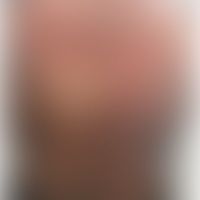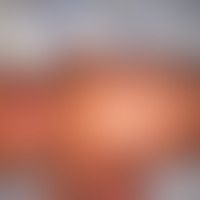Image diagnoses for "Torso", "Plaque (raised surface > 1cm)"
265 results with 950 images
Results forTorsoPlaque (raised surface > 1cm)

Intertriginous psoriasis L40.84
psoriasis intertriginosa: 65-year-old patients. sharply defined, red, in places slightly weeping, itchy plaques. resistance to therapy!
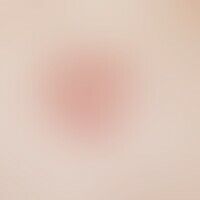
Basal cell carcinoma superficial C44.L
Basal cell carcinoma, superficial, sharply defined, centrally slightly atrophic, scaly plaque in the area of the trunk with a distinct edge.
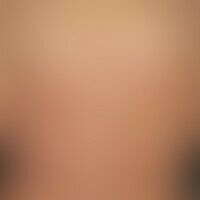
Acanthosis nigricans maligna L83
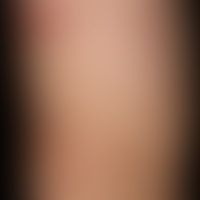
Atopic dermatitis in children and adolescents L20.8
Atopic eczema in children/adolescents: 3-year-old toddler with previously known atopic eczema; for several weeks increasing severe eczematization with excruciating itching, elevated nummular (also borderline) crusty and weeping plaques; evidence of gram-positive coccus.
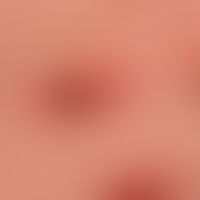
Psoriasis vulgaris L40.00
Psoriasis vulgaris Psoriatic plaques around a larger and smaller (between the senile angioma shown above and the melanocytic nevus shown on the right) seborrhoeic keratoses (see also nevus, melanocytic, Meyerson's nevus).

Mycosis fungoides C84.0
Mycosis fungoides: Plaque stage. 53-year-old man with multiple, disseminated, 1.0-5.0 cm large, in places also large, moderately itchy, clearly consistency increased, red rough plaques. development over 4 years.
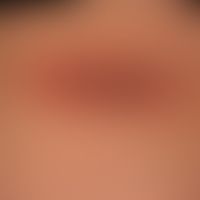
Erythema migrans A69.2
Erythema chronicum migrans: Oval, slowly growing, completely symptom-free, red-brown, homogeneously filled stain, slightly darkened in the centre. persists for about 2 months. healing under 2-week therapy with doxycyline (200 mg). stain was still visible 6 months after completion of antibiotic therapy.

Pemphigus chronicus benignus familiaris Q82.8
Pemphigus chronicus benignus familiaris. marginal area: multiple crusty, sharply defined, red, rough plaques.
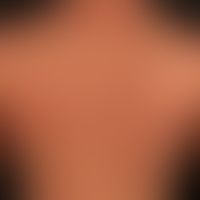
Nummular dermatitis L30.0
Nummular dermatitis: Extensive eczema that has been present for several months, with blurred papules and confluent plaques; distinct itching.
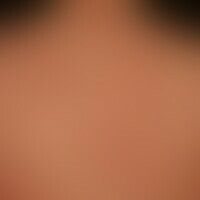
Lupus erythematosus acute-cutaneous L93.1
lupus erythematosus acute-cutaneous: clinical picture known for several years, occurring within 14 days, at the time of admission still with intermittent course. anular pattern. in the current intermittent phase fatigue and exhaustion. ANA 1:160; anti-Ro/SSA antibodies positive. DIF: LE - typical.

Cutaneous lupus erythematosus (overview) L93.-
Lupus erythematodes tumidus: Plaques existing for 3 months, localized on the back and face, irregularly distributed, sharply defined, 0.2-3.0 cm in size, flatly raised, clearly increased in consistency, slightly sensitive, red, smooth plaques; no significant scaling.
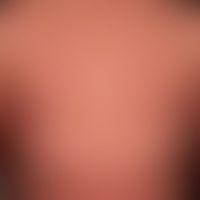
Sézary syndrome C84.1
Sézary syndrome: universal redness with generalized lymphadenopathy; massive itching combined with pain when the integument dries out.

Psoriasis vulgaris L40.00
Psoriasis vulgaris: chronic inpatient, therapy-resistant, intertriginous psoriasis.
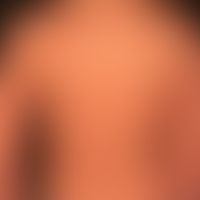
Folliculotropic mycosis fungoides C84.0
Mycosis fungoides follikulotrope: 10-year-old girl with generalized folliculotropic Mycosis fungoides. foudroyant course of the disease which made a stem cell transplantation necessary
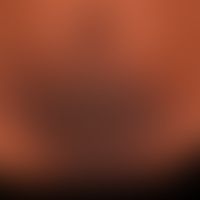
Lichen simplex chronicus L28.0
Lichen simplex chronicus in dark skin. 0.1-0.2 cm large, marginally disseminated, firm brown-black (red shade is missing) papules, which have confluated into a flat plaque in the centre of the lesion. Permanent itching, which increases under stress.

Melanoma superficial spreading C43.L
Melanoma, superficially spreading: no longer symmetrical, surface-smooth only moderately sharply defined plaque with a reflective surface.

Lymphomatoid granulomatosis C83.8
Lymphomatoid granulomatosis: uncharacteristic, painless, reddish-brown plaque S. Casuistry
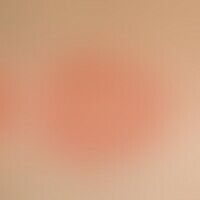
Microsphere B35.0
Microspore. detailed picture with anular plaque, marginal scaling ruffle with central pallor (trunk).

Parapsoriasis en plaques large L41.4
Parapsoriasis en plaques, grandiose: completely symptomless, sharply defined, disseminated spots and plaques; only when the skin is folded does a cigarette-paper-like pseudoatrophic architecture of the skin surface become visible (important diagnostic sign!).

Contact dermatitis allergic L23.0
Acute contact allergic eczema with scattering reaction after application of a gel containing diclofenac; linear patterns (Koebner phenomenon) in the upper third of the dermatitis.

